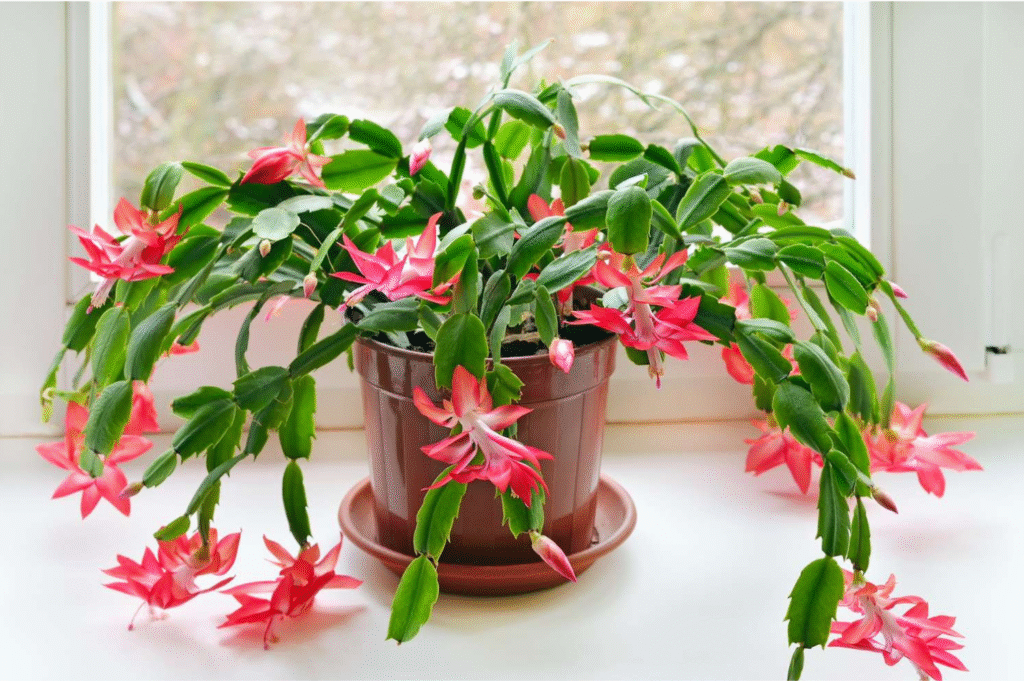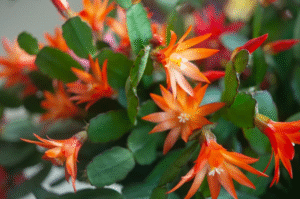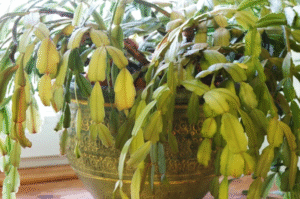Growing a Christmas cactus (Schlumbergera) from seed is a slow but rewarding process. Unlike propagation by cuttings, starting from seeds lets you enjoy the full plant life cycle and even grow unique hybrids. Whether you’re a houseplant enthusiast or a beginner, this guide will walk you through everything you need to know.
Can You Grow Christmas Cactus from Seed?
Yes, absolutely! While most people propagate Christmas cactus from cuttings, growing it from seed is possible and fun. It takes patience, as germination and growth are slow, but the experience is worth it, especially if you want to experiment with cross-pollination or create your varieties.
Where Do Christmas Cactus Seeds Come From?
Christmas cactus seeds come from the berry-like fruit that forms after the plant blooms and is successfully pollinated. These fruits contain small black seeds that can be collected and planted.
Tip: If you have more than one Christmas cactus, you can hand-pollinate the flowers using a soft brush to increase the chances of fruit and seed production.
How to Harvest Seeds from Christmas Cactus
- Wait for the Fruit to ripen: The fruit takes several months to mature and will turn soft and slightly wrinkled.
- Remove the Seeds: Gently squeeze the fruit and collect the tiny black seeds.
- Clean and Dry: Rinse the seeds in water to remove any pulp, then let them air-dry on a paper towel for a day or two.
Step-by-Step: How to Grow Christmas Cactus from Seed
1. Prepare the Potting Mix
Use a well-draining soil mix, a combination of succulent soil, peat moss, and perlite works well. The mix should retain moisture but not stay soggy.
2. Choose the Right Container
Use shallow trays or small seedling pots with drainage holes. Transparent lids or a humidity dome can help maintain moisture during germination.
3. Sow the Seeds
- Lightly scatter the seeds on top of the moist soil.
- Gently press them down; do not bury.
- Mist the surface with water to keep it moist.
4. Maintain Warmth and Humidity
Place the container in a warm, bright area with indirect sunlight. The ideal temperature is 65–75°F (18–24°C). Cover with plastic or a dome to create a mini greenhouse.
5. Wait for Germination
Germination can take 2 to 6 weeks, depending on the environment. Keep the soil consistently moist but never soggy.
6. Transplanting the Seedlings
Once the seedlings are about 1 inch tall and have a few sets of true leaves, carefully transplant them into individual pots. Use the same cactus-friendly soil mix.
Bonus Tip: Use a spoon or tweezers for delicate transplanting without damaging the roots.
How Long Does It Take to Grow a Christmas Cactus from Seed?
It can take 1 to 2 years for a Christmas cactus grown from seed to become a mature plant and even longer to bloom. But the joy of watching it grow from scratch makes the wait worthwhile.
Caring for Young Christmas Cactus Seedlings
- Light: Provide bright but filtered light, and avoid direct sunlight.
- Water: Water when the topsoil feels dry; don’t let it dry out completely.
- Humidity: Christmas cactus prefers slightly humid air, great for bathrooms or with a pebble tray.
- Feeding: Use a diluted liquid fertilizer once a month during active growth (spring and summer).
Common Mistakes to Avoid
- Overwatering: Leads to root rot.
- Using garden soil: It’s too dense and holds too much moisture.
- Low light: Slows down growth and may cause leggy seedlings.
- Neglecting humidity: Dry air can hinder germination and early growth.
Final Thoughts
Growing a Christmas cactus from seed is a slow journey, but a truly fulfilling one. With patience, the right soil, warmth, and a bit of care, you can enjoy raising this beautiful holiday bloomer from its tiniest form.
Whether you’re growing for fun or creating new hybrids, this process adds a personal touch to your indoor plant collection.
Frequently Asked Questions (FAQs):
Can Christmas cactus seeds be stored?
Yes, store them in a cool, dry place inside a paper envelope or an airtight container. Use within a year for best results.
Will a seed-grown Christmas cactus bloom?
Yes, but it may take 2–3 years to produce its first flowers.






